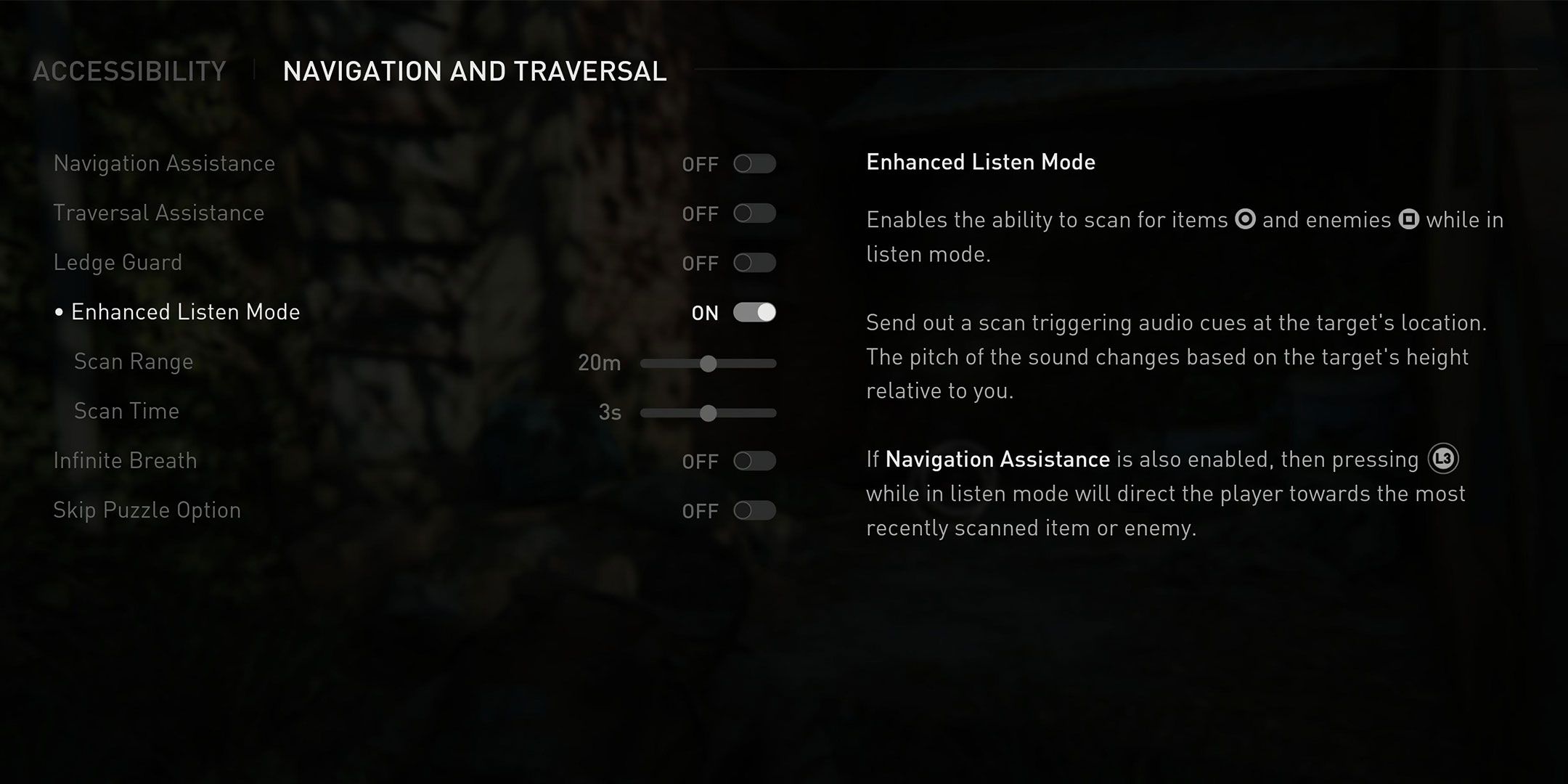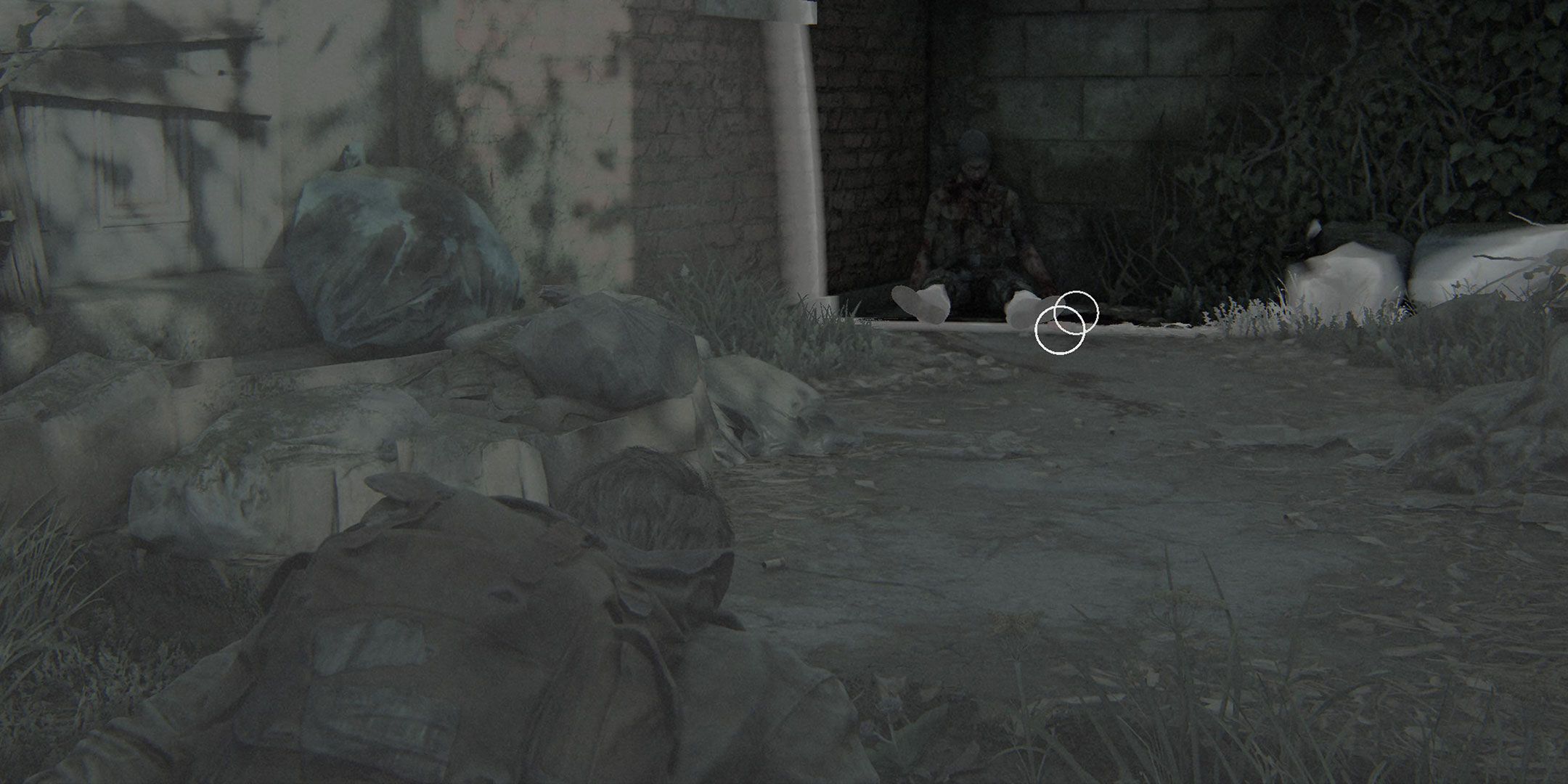The Last of Us Part 1 and Part 2 have some incredible accessibility options. In an era of gaming where studios are trying to be as inclusive as possible to make sure that everyone can play games no matter their ability or skill level, this pair of games has garnered a reputation for having some of the best customization and accessibility options available.
I tend not to need much accessibility help when gaming, but given how acclaimed the options in The Last of Us games are, I started my most recent playthrough of The Last of Us Part 1 checking the menu to see what exactly was on offer. One of the options, ‘Enhanced Listen Mode,’ caught my eye, and after trying it out, I’m convinced that every game needs to have a feature like it.
The Last Of Us Enhanced Listen Mode Explained
Enhanced Listen Mode is simple. In The Last of Us, Joel, Ellie, and Abby can listen to the world around them and visualize where the enemies are. I guess everyone in the apocalypse is born with wall hacks. By turning on the enhanced setting, the player can hit the circle button to send out an echolocation-style ping that highlights items and collectibles so that you can easily see where they are, too.
This setting is great for anyone who struggles to identify items against the cluttered world of The Last of Us, but it’s an amazing tool that anyone can benefit from. My playthrough has been made significantly more enjoyable because I don’t need to explore every area, mashing the interact button just in case I missed a bit of tape, scissors, or ammo. Now, all I need to do is do a quick ping as soon as I enter an area, and I know exactly where to go to find some supplies.
A potential unintended perk of the ping system is that, because I know exactly which areas have items, I don’t need to spend my time searching for them high and low. Instead, I can simply appreciate the environment design each area has. I’ve noticed new small details about every place I explore in The Last of Us Part 1, thanks to the fact that I’m not ignoring anything that isn’t a cabinet full of upgrade pills, jars of nails, and broken scissors.
NoteWhy does every house only have half a pair of scissors?
Assassin’s Creed Shadows uses a similar loot identification system that I also enjoyed. While in Eagle Vision, you can see where treasure chests and other important items are hidden through the walls. This type of system does a great job of directing you to upgrade materials, but it’s also helpful in showing you where you can go if you just want to take a look at the gorgeous scenery. It’s an option that I wish all games had.
A New Way To Handle Item Bloat
The item ping system works great in The Last of Us when resources are scarce, but I’d welcome it in plenty of other genres as well. The current era of gaming we’re in has so many games that are packed to the brim with junk. In games like Starfield and Cyberpunk 2077, you can hoard every single piece of garbage you find on the street if you really want to. The sheer volume of loot you can find in these games is overwhelming to me. Just the idea of sifting through all the trash for useful scrap gives me a headache, so I don’t bother.
If Cyberpunk 2077 and other games like it had some kind of ping system like The Last of Us, not only would it help us identify where items are, but also what kind of item they are by breaking them down into categories like ammo, crafting resources, and vendor trash. It would make engaging with those systems a lot less stressful.
There’s something cool about the way The Last of Us handles its item distribution if you turn on the Enhanced Listen Mode that want more games to capitalize on. It lets me streamline the process of searching for supplies while also encouraging me to soak in all the sights, and I want to see more games include features like this. I wish Naughty Dog’s work on accessibility had gotten more recognition than it did, and that these tools had already been adopted as an industry standard. With The Last of Us back in the public eye again thanks to the HBO adaptation, I hope more developers will replay the games, discover the system, and think of interesting new ways to incorporate something like it into their games.




0 Comments